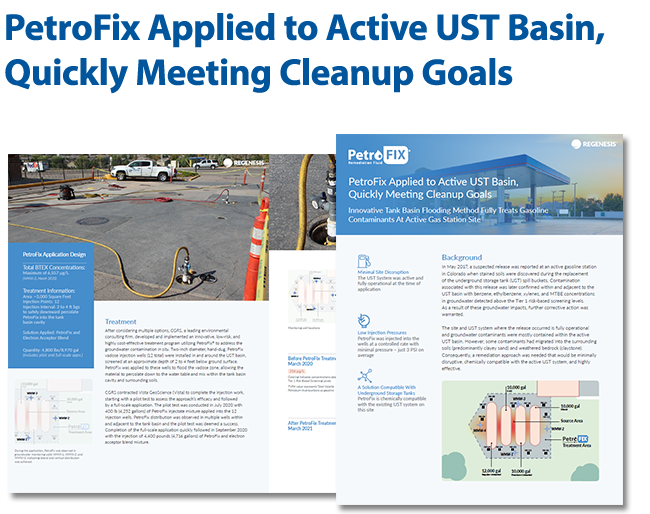This case study reviews an active gasoline station in Colorado where stained soils were discovered during the replacement of the underground storage tank (UST) spill buckets. After considering multiple options, CGRS, a leading environmental consulting firm, developed and implemented an innovative, low-risk, and highly cost-effective treatment program utilizing PetroFix® to address the groundwater contamination in situ.
Case study highlights:
- Innovative tank basin flooding method fully treats gasoline contaminants at active gas station site
- PetroFix was injected into the wells at a controlled rate with minimal pressure – just 3 PSI on average
- PetroFix is chemically compatible with the existing UST system on this site
Contamination associated with this release was later confirmed within and adjacent to the UST basin with benzene, ethylbenzene, xylenes, and MTBE concentrations in groundwater detected above the Tier 1 risk-based screening levels. As a result of these groundwater impacts, further corrective action was warranted. The site and UST system where the release occurred is fully operational and groundwater contaminants were mostly contained within the active UST basin. However, some contaminants had migrated into the surrounding soils (predominantly clayey sand) and weathered bedrock (claystone). Consequently, a remediation approach was needed that would be minimally disruptive, chemically compatible with the active UST system, and highly effective.


